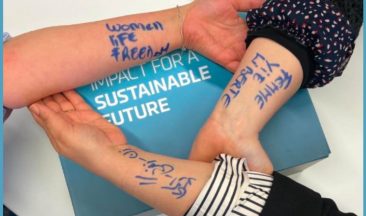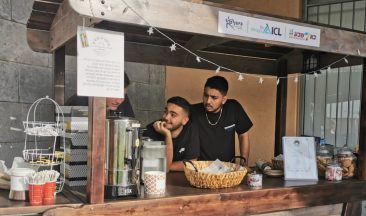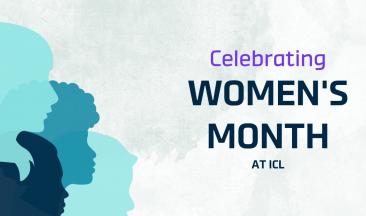ICL is investing in the creation and transformation of public places to improve the quality of life for residents of dozens of communities.
Adapting Our Environments to Meet Our Needs
Many of us dream of relocating to a new community. Some people crave peace and quiet, or a home built in a beautiful natural setting with stunning views and wildlife in abundance. Others eye the big cities in search of modern urban living and all the excitement of a major metropolis. Often, a quiet suburb with good schools and public facilities represents an attractive compromise.
The majority of people find the prospect of a life-changing move challenging to say the least. We may be bound by employment opportunities, family commitments, our children’s educational needs, personal budgets, and even just anxiety at the prospect of a fresh start in a completely new location.
The quality of life in all urban areas is a major issue. High housing prices, crime, noise, pollution, traffic density, and effective public transport are ongoing challenges. Civic leaders, town planners, and public officials struggle to deliver a true quality of life in our cities.
It’s easy to jump to the convenient conclusion that there are too many people living in too small a space, or that there is competition between residential and business needs in urban communities. These are certainly issues, but often, the underlying problem is simply that urban conurbations are poorly designed.
Quality of life issues are not confined to the big cities. Even purpose-built suburbs, or outwardly idyllic rural communities can be blighted when there is a lack of readily accessible public spaces that encourage human interaction. ICL’s solution to the problem is to help communities to adapt their existing environments to meet their unique needs.
Public Spaces Build Human Connections
A key aspect of quality of life in urban areas – be it inner cities, small towns or suburbs – is access to public places. The availability of safe and pleasant areas where people can go to relax, create economic activity, or come together for social and community events makes a huge difference to our quality of life.
Humans are essentially social creatures who depend on contact, cooperation, and mutual support. We thrive on every level when we build healthy communities. Properly designed and implemented public spaces contribute to a functional community where people interact together and build relationships. When vital spaces are created, they can spur rejuvenation and strengthen society as a whole.
The absence of public spaces aggravates social isolation and reduces community networks. Some city neighborhoods become social deserts, inhabited by individuals and family units who largely remain strangers to one another. All communities are robbed of their potential when there is a lack of public spaces, but the elderly, the socially isolated and the vulnerable often suffer disproportionately.
The Vital Role of Placemaking
When town plans are characterized by top-down design processes and reactionary discipline-driven preconceptions, public places are often treated as mere concessions to the community. It’s hardly surprising when they fail to serve a community’s needs or are entirely unfit for purpose.
Placemaking is a concept that goes far beyond town planning or urban design. Placemaking is a conscious effort to build communities around the places that matter to people. It also seeks to create the means for each community to shape, design, or improve these shared spaces in a sustainable way and according to its specific needs and community vision.
Placemaking is first and foremost about functionality, which in turn requires local knowledge. This project offers a gentle, pragmatic, and a human approach to creating quality living spaces.
Placemaking in Action
Placemaking as a practical process begins with identifying and bringing together stakeholders in a particular space. These can include local residents and business owners, cultural, religious, or community organizations that have a role to play, as well as municipal officials and political leaders.
Placemaking Workshops are a collective process to assess and evaluate how a space is used and identify improvements. There is an emphasis on engagement, feedback, and brainstorming sessions. The goal is to develop a Place Vision that defines the nature and purpose of the space, creating a description, concept plan, and action plan for the development of the social asset.
Public space design considerations include:
- Accessibility for all members of the community
- Inclusivity and compromise between diverse needs and opinions
- The importance of art, culture, and education to vibrant public spaces
Once there is a roadmap in place, a process of incremental improvements and innovations can begin. Experience has shown that the Lighter, Quicker, Cheaper (LQC) concept delivers the best results. A series of LQC projects can transform a public space in a way that incorporates learning and allows flexibility.
Ideas are tested and success is reinforced. The LQC approach minimizes the negative consequences of flawed ideas and allows fast reappraisals and easy realignments when mistakes are made.
Once a space is optimized and revitalized, there is a process of continual monitoring and evaluation. This is community-based and ensures that the basics – adequate maintenance, effective policing, and continual small improvements – are implemented. On a broader scale, stakeholders and managers can perpetually reinvent the space and keep it in sync with evolving community needs and wider technological developments.
ICL’s Unique Approach: Creating a Partnership of Stakeholders
When it comes to implementing projects and achieving challenging goals, ICL draws on a century of practical experience and knowledge. A community project is a dynamic process that is driven by the energy and enthusiasm of all the participants. Everybody has a unique perspective and something valuable to contribute. Effective placemaking project management is all about harnessing and channeling all these disparate qualities within a clear framework.
When ICL gets involved in a placemaking project, it consciously avoids any kind of top-down approach. Experience has shown that a bottom-up or a laissez-faire approach is equally counterproductive. The goal is to create a flexible and functional partnership for all the stakeholders.
ICL provides resources and expertise as needed, and local community needs are addressed by local experts. The local community contributes to the vision and design, often provides voluntary labor, and usually succeeds in creating a public space that surpasses all initial expectations. The stakeholder partnership principle works in all kinds of scenarios, from improving existing public spaces, to incorporating local historical or cultural heritage into public spaces, and creating educational facilities for the community.
ICL and Local Communities – A Dynamic Partnership for Quality Spaces
ICL has a profound commitment to community action and sustainable social initiatives. The company encourages its staff to volunteer their energy and expertise to a range of projects that it supports financially, primarily through its respected Thinking Doing program.
Part of the key to the success of the Placemaking projects is that each public space is a true community asset. It is the local community that assumes responsibility for running and maintaining each new or improved space. ICL functions as a catalyst and an enabler but takes a step back as soon as the project is up and running.
The day-to-day administration of a successfully completed project creates and maintains new community networks. These mini-organizations bring residents together, foster awareness of other challenges and opportunities, and establish a launch pad for future Placemaking projects or other community initiatives.
Har-Amasa Edible Forest
The Edible Forest project has created a green public space that educates, informs, and protects important local heritage. The forest provides vital support to the local ecosystem and encourages much needed biodiversity. The community forest produces foods and medicinal plants and provides a valuable natural space for everybody. The project places major emphasis on education and provides facilities for workshops, agricultural work experience, and youth entrepreneurship. It also welcomes tourists and groups who want to see the plant nursery and gardens. The Edible Forest is, by its nature, a sustainable project, and its infrastructure was built using local materials.
The Neot HaKikar Dragon
Few children’s play areas and community spaces can boast their own dragon, but the unique dragon statue is a central feature of the Neot HaKikar public space. The dragon is made entirely from recycled materials and was the brainchild of an elderly resident of the community. The play area itself is hugely popular with local families and provides a safe and enjoyable place for the settlement’s kids. The development of the play area serves as a classic example of a whole community coming together, and collaborating to create a collective vision for transforming an unused space into a remarkable public area. Also working together to build it and please mention that this was an unused public space.
Midreshet Ben-Gurion – Multi-Age Community Garden
Perhaps one of the saddest consequences of modern urban design is the disconnect between the young and the elderly in communities. The multi-age community garden aims to bring the generations together in a safe and charming public garden. The garden is designed for hosting community events and cultural meetings, as well as for the quiet contemplation of nature. Visitors can enjoy shaded areas, a greenhouse, pergola and can join the activist community that supports and maintains this beautiful public space.
ICL: Investing in Local Communities
Well thought out and functional public spaces are one of the foundations of a safe, happy, and rewarding community. It doesn’t matter if the community in question is a deprived urban neighborhood, a small desert settlement, or an average suburb. People have the same basic needs for social interaction and mutual support. The key is to let the community lead and tailor each project to specific local requirements.
ICL is committed to investing in local communities through its Thinking Doing project and other initiatives. The only real conditions are that projects should be sustainable and ultimately self-supporting and that the local community should be at the forefront of every plan. ICL employee volunteers can make great things happen in a remarkably short time. Our own employees are also a part of those communities and are residents of these towns. But it’s community volunteers who continue to amaze us with their vision and drive.
If you have an idea for a new public space in your community or see an opportunity to reinvigorate and improve an existing one, we’d love to hear from you!







